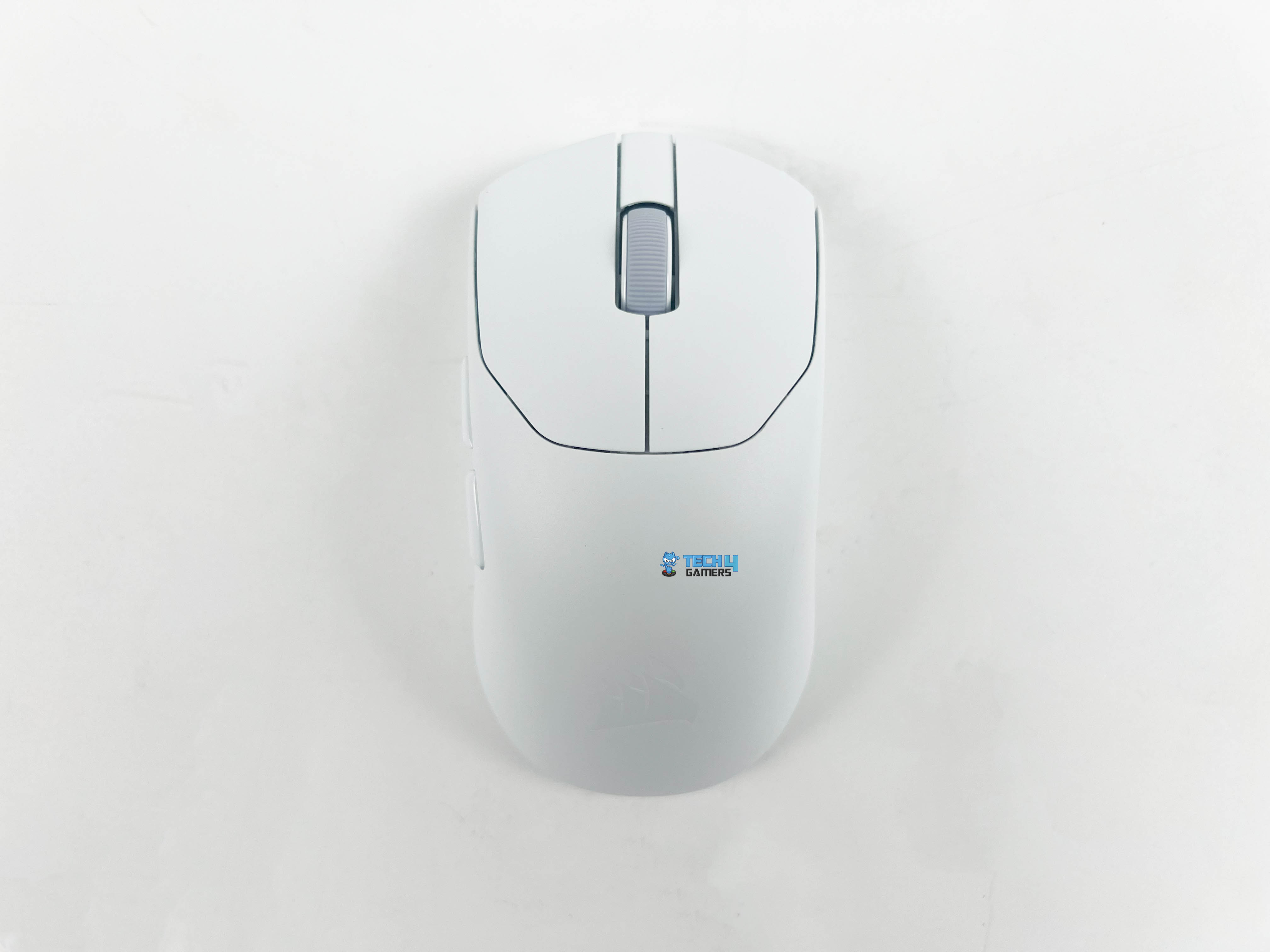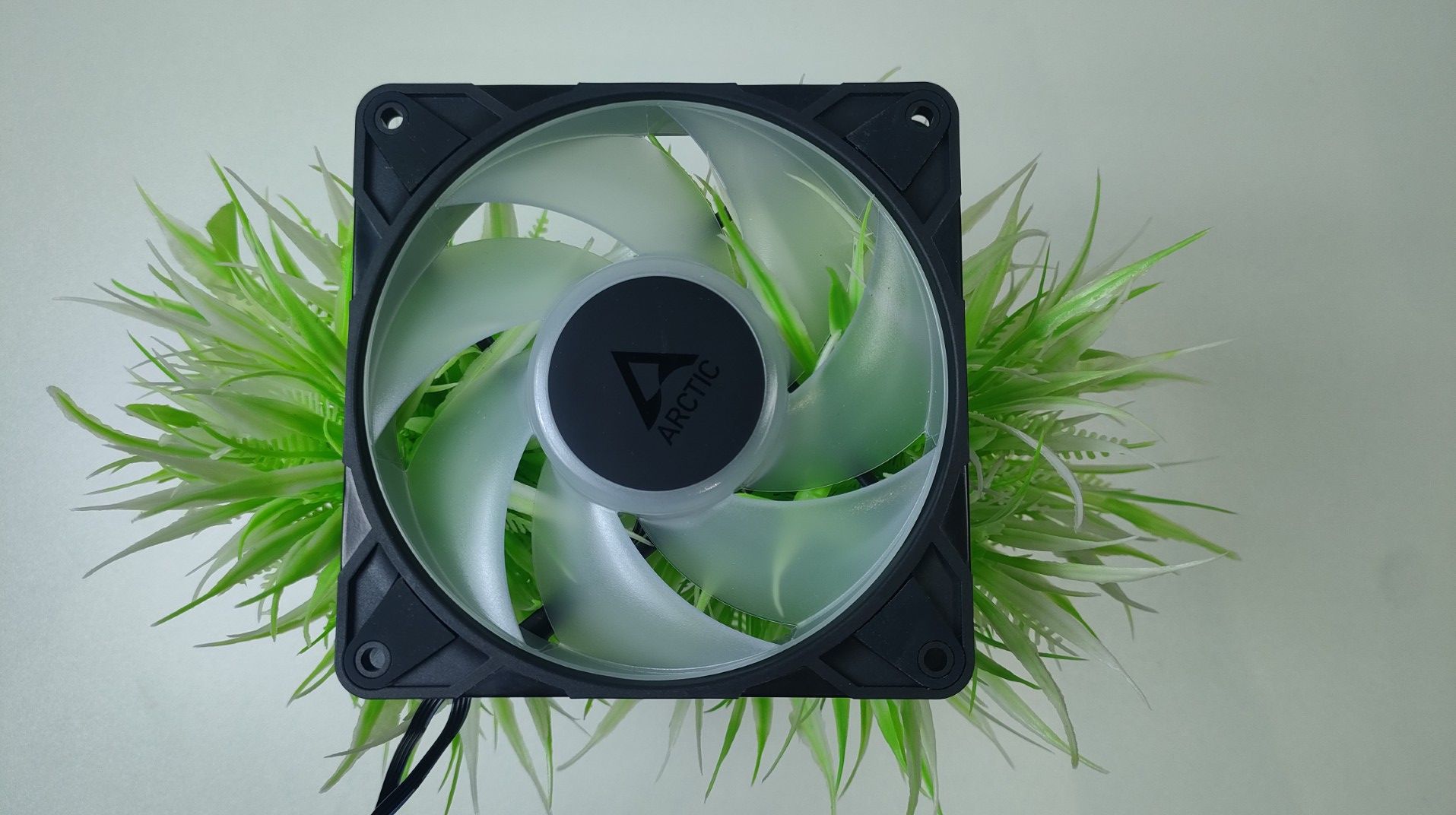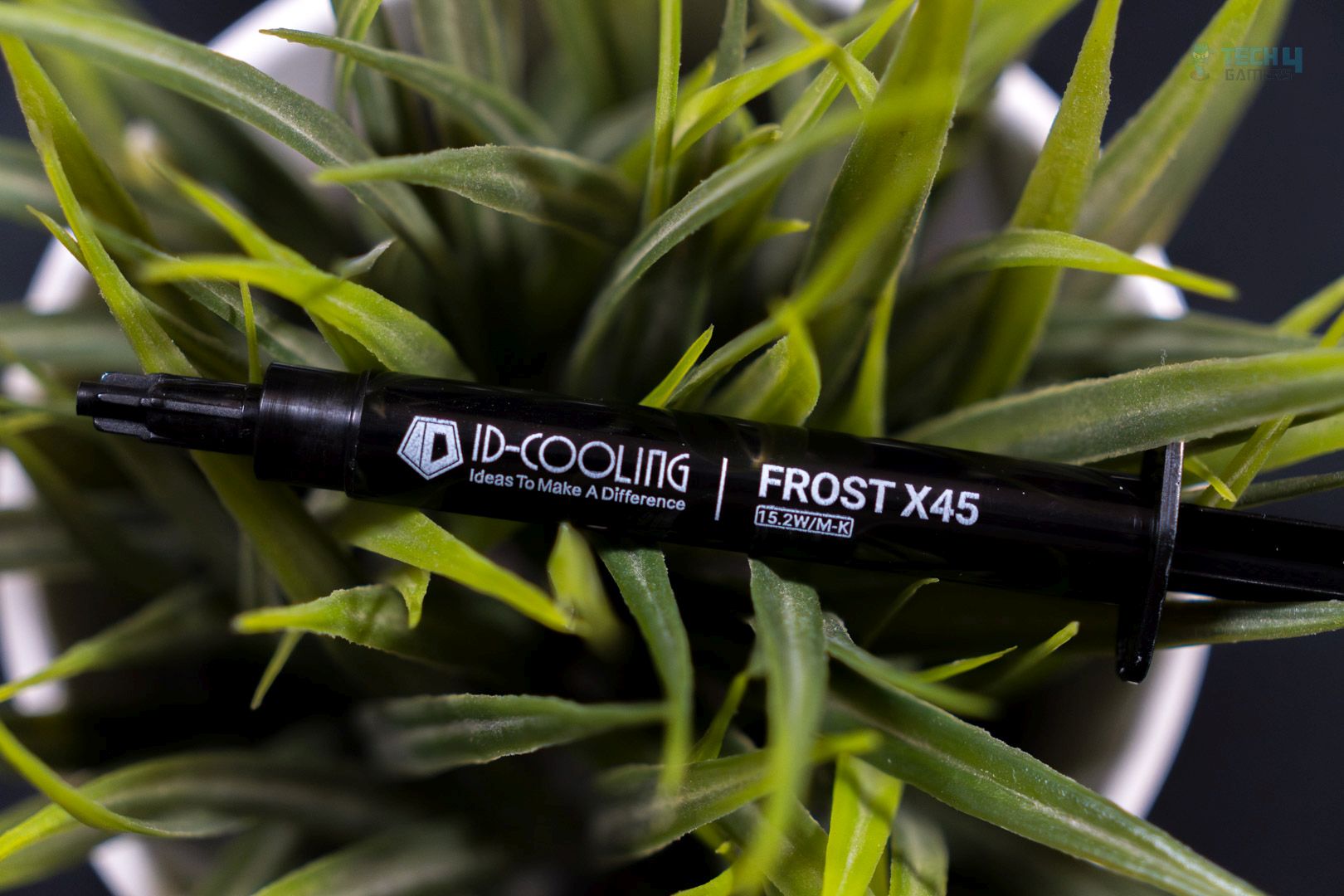Great OC Potential!
Review Summary
The ORICO Raceline Neon DDR5 RAM (32GB, 7200MT/s CL34) delivers strong performance with reliable Hynix A-die chips, solid cooling, and eye-catching RGB. It’s built for gamers, creators, and overclockers who want high speeds and tuning flexibility. While it’s not suited for budget systems or compact builds, it stands out for its design, overclocking potential, and fair pricing in the premium DDR5 category.
Hours Tested: 5
Overall
-
Performance - 9/10
9/10
-
Build Quality - 9.5/10
9.5/10
-
Value - 9/10
9/10
Pros
- Decent Bandwidth
- Excellent Timings
- Can Reach 7800MT/s in our testings
- Sporty Design
- Premium Packaging
Cons
- Limited Warranty
Update: There is a discount on the ORICO Raceline Neon 32GB DDR5. The kit is 12% off on Amazon with code URRVA5IH (valid until October 31, 2025) and 15% off on ORICO Global with the same code (valid until December 31, 2025).
ORICO is a Chinese tech company founded in 2019 that manufactures computer accessories, peripherals, and storage solutions. This brand has expanded a lot in recent years and is known for its competitive prices. Earlier, we reviewed their IG740 Pro 2TB NVMe SSD, which got a respectable rating mainly due to its performance and value. Today, we will be looking at their recently launched high-speed DDR5 memory, Raceline Neon 32GB (16×2), which has a transfer speed of 7200MT/s at the CL34. The RAM also supports RGB, and it’s Hynix-based DRAM. It also supports Intel XMP 3.0 and EXPO. We’ll be comparing this RAM to the best-performing RAMs available in the market. Let’s see how it does!
The Raceline Neon line-up comes in different speeds and colors, notably black and silver. It also comes in three different frequencies, which are 6000/6400/7200 MT/s with a capacity of 32GB (16×2). One thing we have noticed in all these RAMs is that they feature decent timings, such as CL30/32/34. In our review, we will be looking at their 7200MT/s CL34 variant.
Let’s go over the specifications!
| ORICO Raceline Neon 32GB (16×2) 7200MT/s CL34 | Specifications |
|---|---|
| Speed | 7200 MT/s |
| Capacity | 32GB (16GB x 2) |
| Primary Timings | 34-45-45-115 |
| DRAM Components | Hynix-A |
| EXPO Support | Yes |
| XMP 3.0 Support | Yes |
| Dimensions (L x W x H) | 137 x 45 x 18 mm |
| Features | 5mm Thick Aluminum, Supports RGB, 10-Layer PCB Design |
| Warranty | 1-3 Year Warranty |
What Makes This ORICO Raceline Neon Kit Different?
Orico Raceline Neon is designed for creators/gamers/enthusiasts who chase the highest performance possible, as this is the high-speed kit with a frequency of 7200 MT/s and CL34, which looks really good on paper. The ram features a 10-layer thickened PCB for enhanced signal integrity and incorporates 8 ARGB LEDs and supports 10+ light effects. This RAM also uses a thick 5mm solid aluminum heatsink, which increases the cooling efficiency by 20% according to ORICO. We’ll see how it performs!
Packaging
Let’s take a look at the packaging
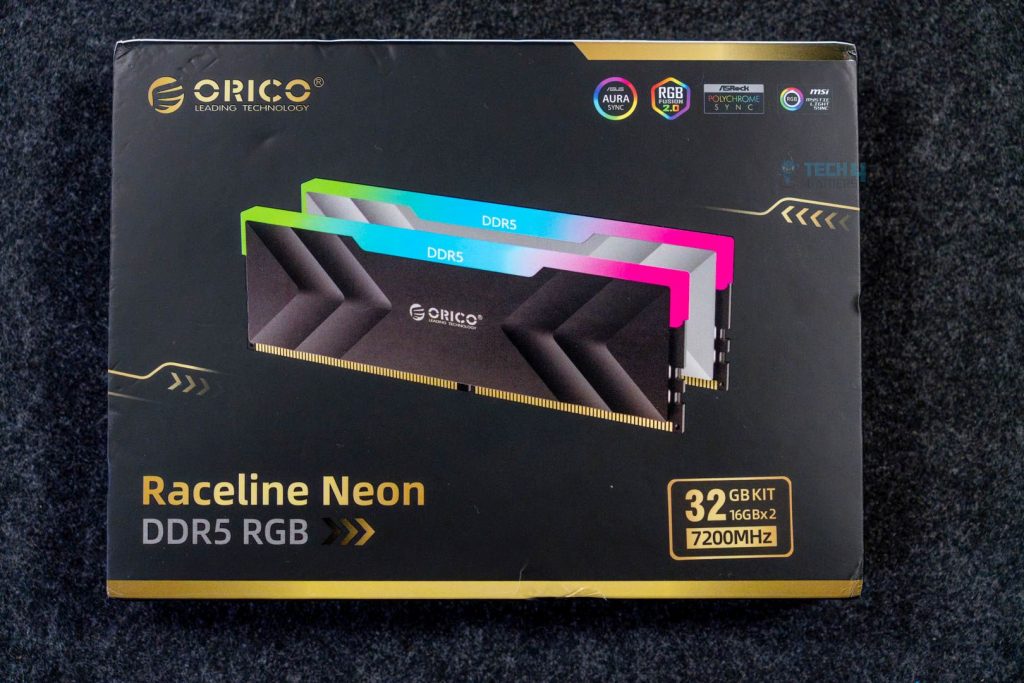
The outer box features a sleek black matte design. Its front prominently displays a rendered image of a module glowing with RGB effects, alongside the series name ”Raceline Neon” is also observed in gold bold lettering, followed by the key specifications like 32GB (16×2) and 7200MHz can also be noticed. The RGB compatibility badges are also highlighted on the box.
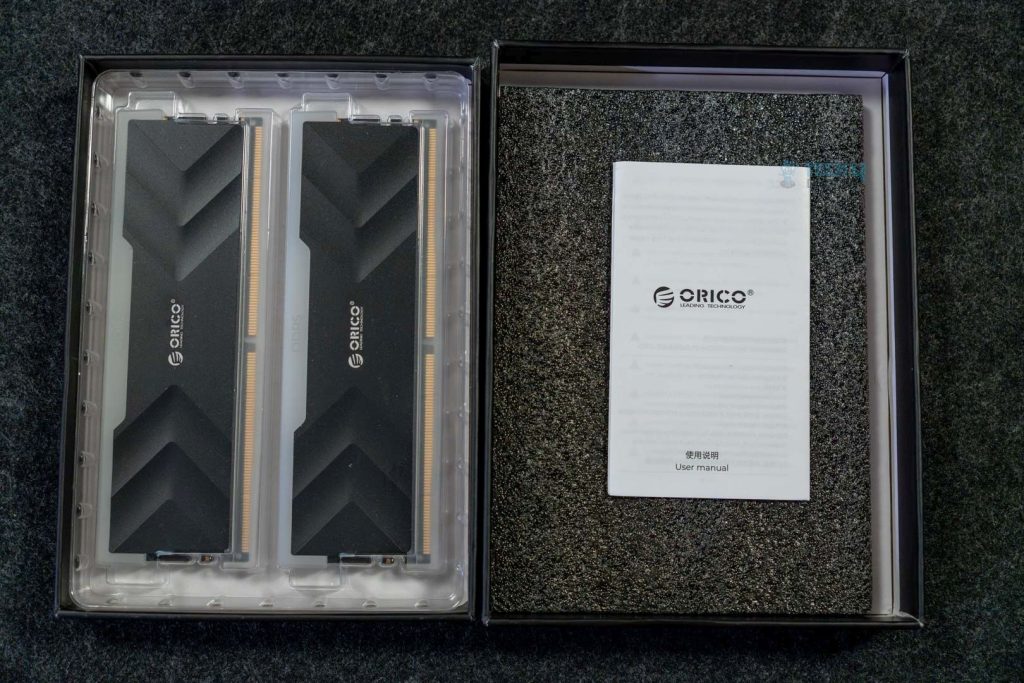
Opening the box reveals the neat and organized setup. The rams are housed in a transparent plastic tray. There’s also a foam padding shielding the tray, and the user manual is also included in the packaging. The unboxing was precise and straightforward.
Closer Examination & Build Quality
Taking a closer look at the sticks.
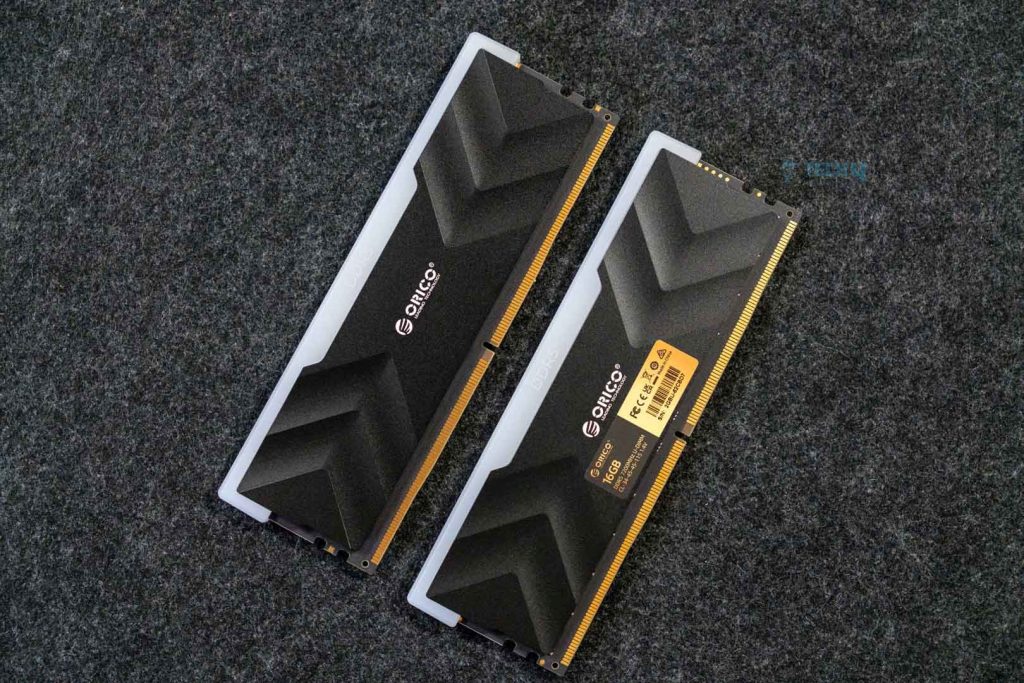
The heatsinks are constructed from 1.5mm aluminum alloy in a black matte finish. A white translucent diffuser runs along the top edge, housing 8 RGB LEDs. In the middle of the heatsink, you can see the ORICO logo displayed in white.
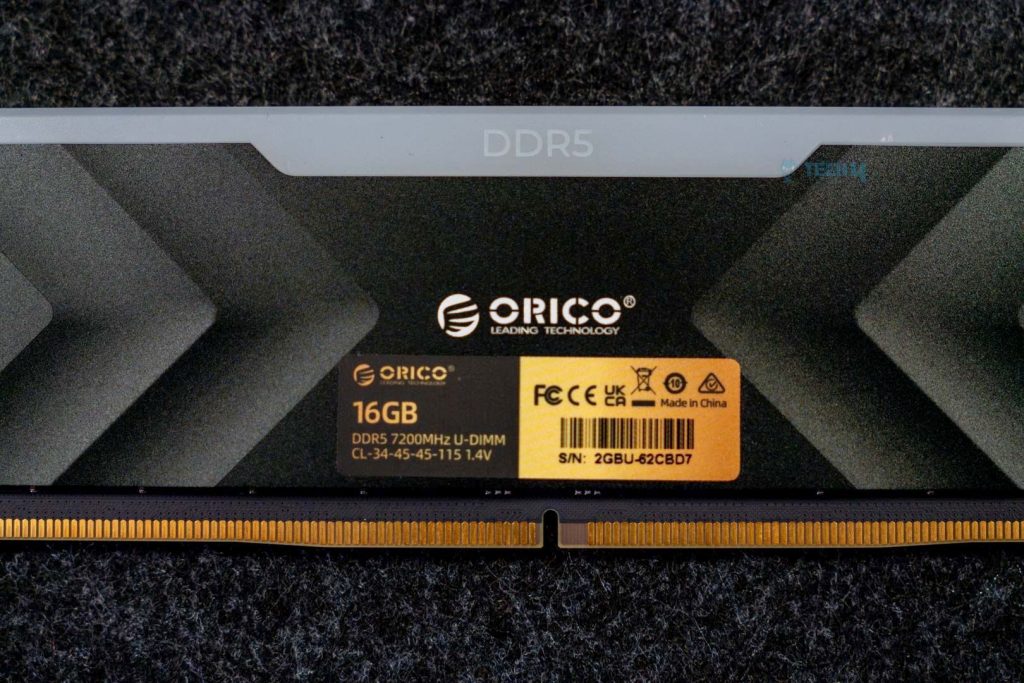
On the back side, at the center bottom, there is also a sticker that reveals the specifications of this RAM. However, I want to point out that this RAM is not compact and might not be suitable for small form factor builds; the dimensions are 137 x 45 x 18 mm in total.
The design provides an aggressive look, thanks to the V-shaped ridges carved on the aluminum heatsink, which could enhance the heat dissipation due to the surface area. Under the hood, Orico uses a 10-layer PCB structure, almost every high-end DDR5 uses that amount of layers to strengthen the signal integrity as compared to the DDR4, which used the 8-layer. It ensures smooth operations at high frequencies, such as this memory. Orico also mentions that they have used industrial-grade thermal silicone for efficient heat transfer.
RAM Timings and Further Details
It’s time to take a closer look at timings.
This RAM features a decent baseline low latency of CL34 at a transfer speed of 7200MT/s, which translates to 9.44ns, already within a reasonable range. I don’t see anything unusual in the overall timings, including the secondary ones; however, they can still be further optimized for improved performance. The voltage also appears typical for this setup, with DRAM VDD/VDDQ at 1.4V. We have seen this voltage commonly used in RAMs above 6200MT/s or 6000MT/s at CL28.
However, if you’re looking to purchase this memory or have already bought it, you can easily perform basic tuning and even increase the transfer speeds on your system with this RAM, as our findings suggest. If you don’t want to go extreme, you can set it to 7400MT/s and lower the tRFC, TFAW, and increase the tREFI. I wouldn’t suggest touching the primary timings, as this would require increasing the DRAM voltage. We have already optimized the RAM and demonstrated its performance in benchmarks. Keep in mind, every kit is different. It is not promised that you will achieve the same level of tuning.
Furthermore, each module is composed of 2GB x 8 memory ICs and was manufactured in early 2025. The DRAM part number is H5CG48AEBDX018, which confirms it’s a Hynix A die. The PMIC (Power Management Integrated Circuit) is from Richtek, carrying the part number RTQ5132GQWF. This primarily handles power regulation for DDR5 modules.
RAM Timings Tuned
We have successfully tuned the memory further and applied a decent overclock to the transfer speeds from 7200MT/s to 7800MT/s. Keep in mind that we are not pushing the memory to the extreme due to the time issue, as this would take hours or days to find the optimal setting. We haven’t touched the primary timings as they already seem decent enough. However, we have adjusted a few secondary timings to achieve respectable performance. First, we have set the frequency of 7800MT/s and applied 1.45V for stability. However, there is a chance that the RAM could run at the EXPO VDD/VDDQ voltages, but we haven’t tried it yet. We then started scouting the timings that can be tuned without breaking the PC. We further tuned the tRFC, tREFI, and tWR and ran a stability test in the Y-Cruncher and called it a day.
Here is the structured table of what we have tuned.
| Category | Original EXPO | Tuned |
|---|---|---|
| Transfer Speed | 7200 MT/s | 7800 MT/s |
| tFAW | 36 | 32 |
| tWR | 96 | 78 |
| tRFC | 1062 | 960 |
| tREFI | 14038 | 50000 |
| DRAM VDD/VDDQ | 1.4v | 1.45v |
RGB Lighting
Let’s take a look at the RGB.
The RGB looks bold and striking; the LEDs are quite vivid and diffuse, and I don’t see any visible hotspots. The light bars span most of the RAM height, ensuring they don’t appear cut off from any angle. This RAM would fit in most aesthetic RGB builds.
Testing Methodology
How Do We Test Rams:
- We test the RAMs in various workloads, including synthetic, gaming, and real-world productivity tests, as memory bandwidth alone is not sufficient. Rams can be complicated at times, as faster speeds do not always translate into better performance. Therefore, we have tested various software to evaluate the performance of the RAMs.
Gaming Performance
- We have three popular games in our suite, and we’re intentionally running them at slightly more CPU-bound scenarios to see how much their performance scales with memory. Most of the time, the average FPS won’t scale as you’d like, but minimum frames, such as 1% lows and 5% lows, can significantly impact the gaming experience. The faster rams with the lower timings can generally smooth out the frame time graphs.
Preparing System:
- We test the RAMs at the EXPO or DOCP at the stock voltages and timings.
- We use the stock BIOS configuration, so memory context restore (MCR) / latency killer are enabled by default on the AM5 platform.
- The CPU and GPU are operating at the stock configuration.
- Our Primary Test system is assembled in Hyte Y70.
The following setup was used for testing:
- CPU: AMD Ryzen 9 9950X
- Motherboard: ASRock X870 Nova WiFi
- Cooler: Ocypus Sigma L36 Pro
- GPU: ZOTAC SOLID RTX 5080
- Case: Hyte Y70
- BIOS: v3.5 – AGESA ComboAM5 1.2.0.3g
- Windows Version: Windows 11 24H2 (OS Build 26100.6584)
Let’s go over the results.
Test – Memory Bandwidth & Latency
We’ll first check the RAM’s speed in raw numbers. Overclockers and enthusiasts generally use AIDA64 to validate memory tuning or performance.
AIDA64 Bandwidth
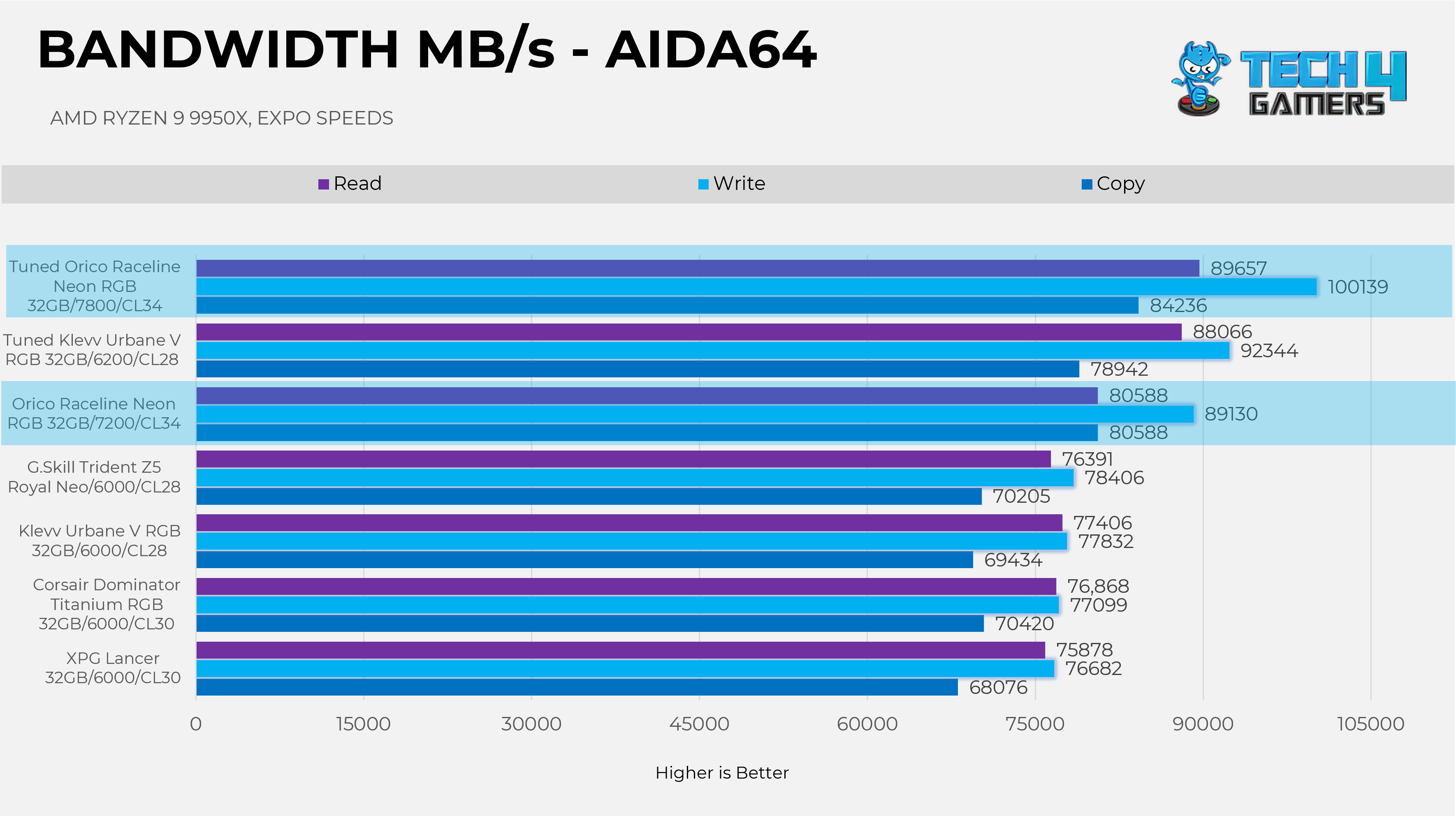
AIDA64 Latency
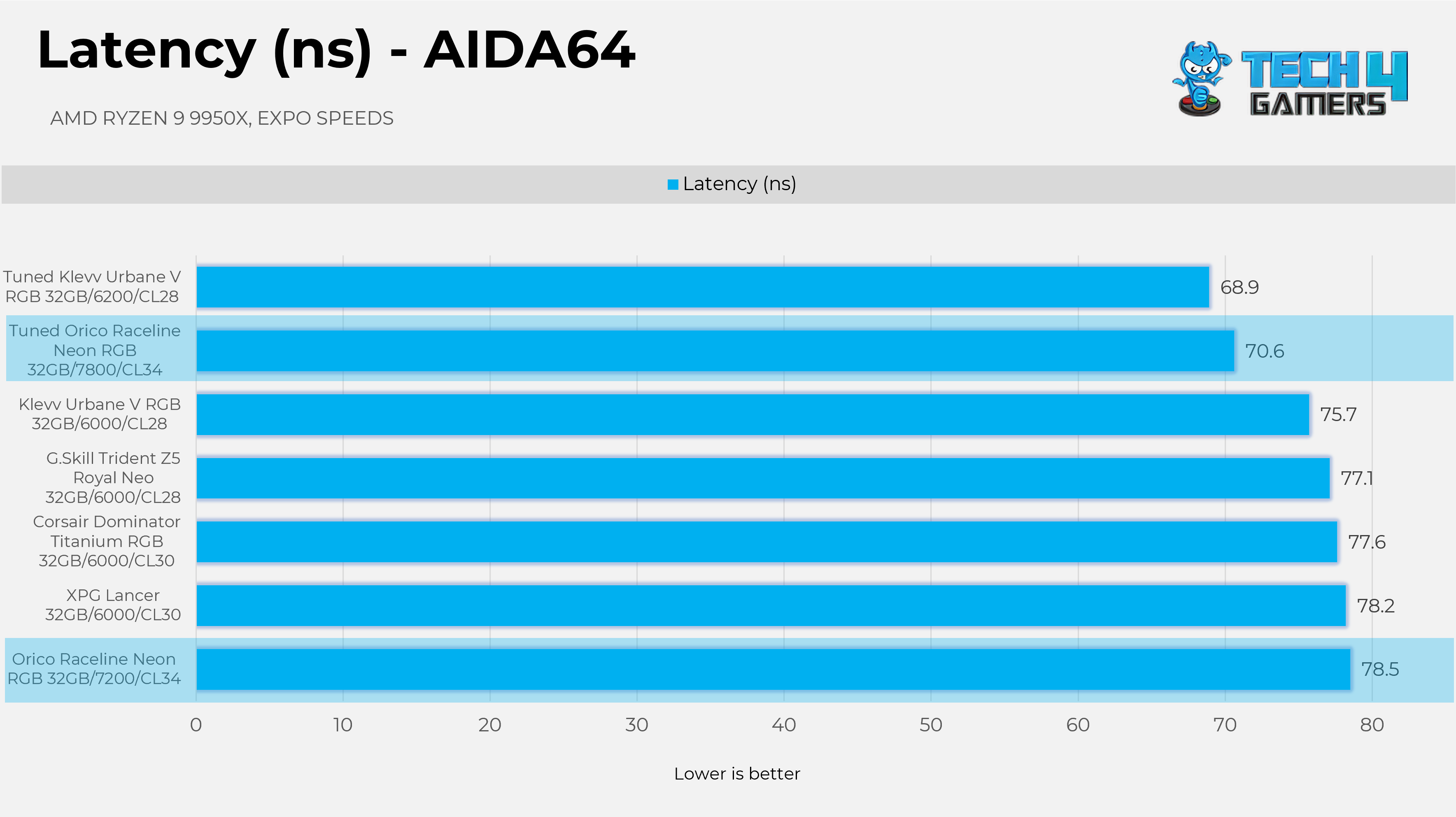
Test – Office Productivity
PCMark 10 benchmarks overall system performance in real-world workloads, such as browsing, video conferencing, and Application start-up. Also, it tests Microsoft Office workloads, including Excel and PowerPoint. Faster RAMs can have an impact on productivity performance.
PCMark10 Applications
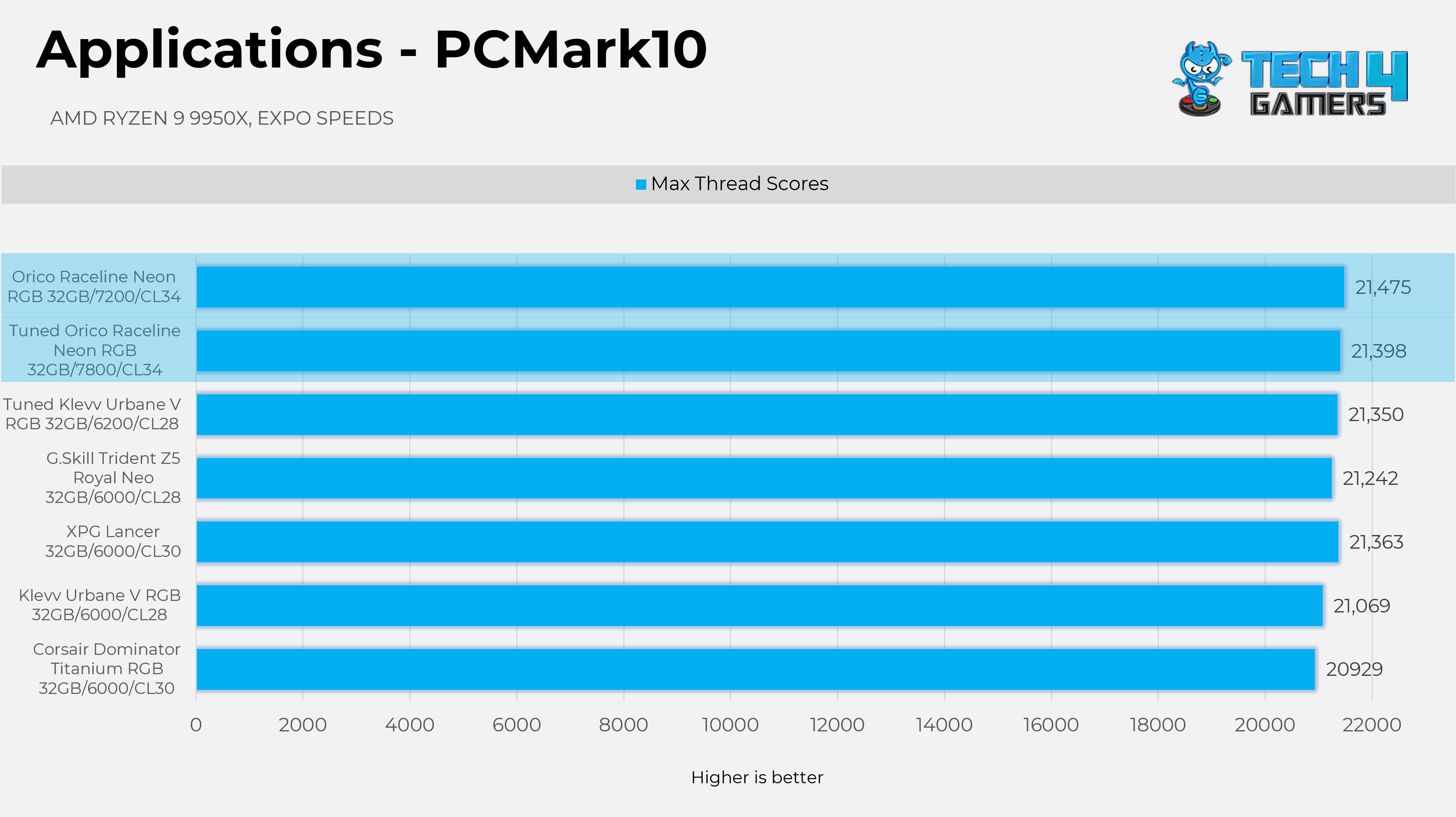
Test – Compute Performance
When you talk about RAMs, most people would only think of bandwidth and latency, as AIDA64 shows. Faster RAMs may yield better scores, such as higher bandwidth, but can those bandwidth scores translate into real-world performance? That’s where compute tests come in to see how fast the CPU can access the data in the memory.
Cinebench 2024
Based on Maxon’s Cinema 4D Rendering Engine, this tool measures how fast your CPU can render a complex scene. However, faster RAM can make a slight difference in the scores.
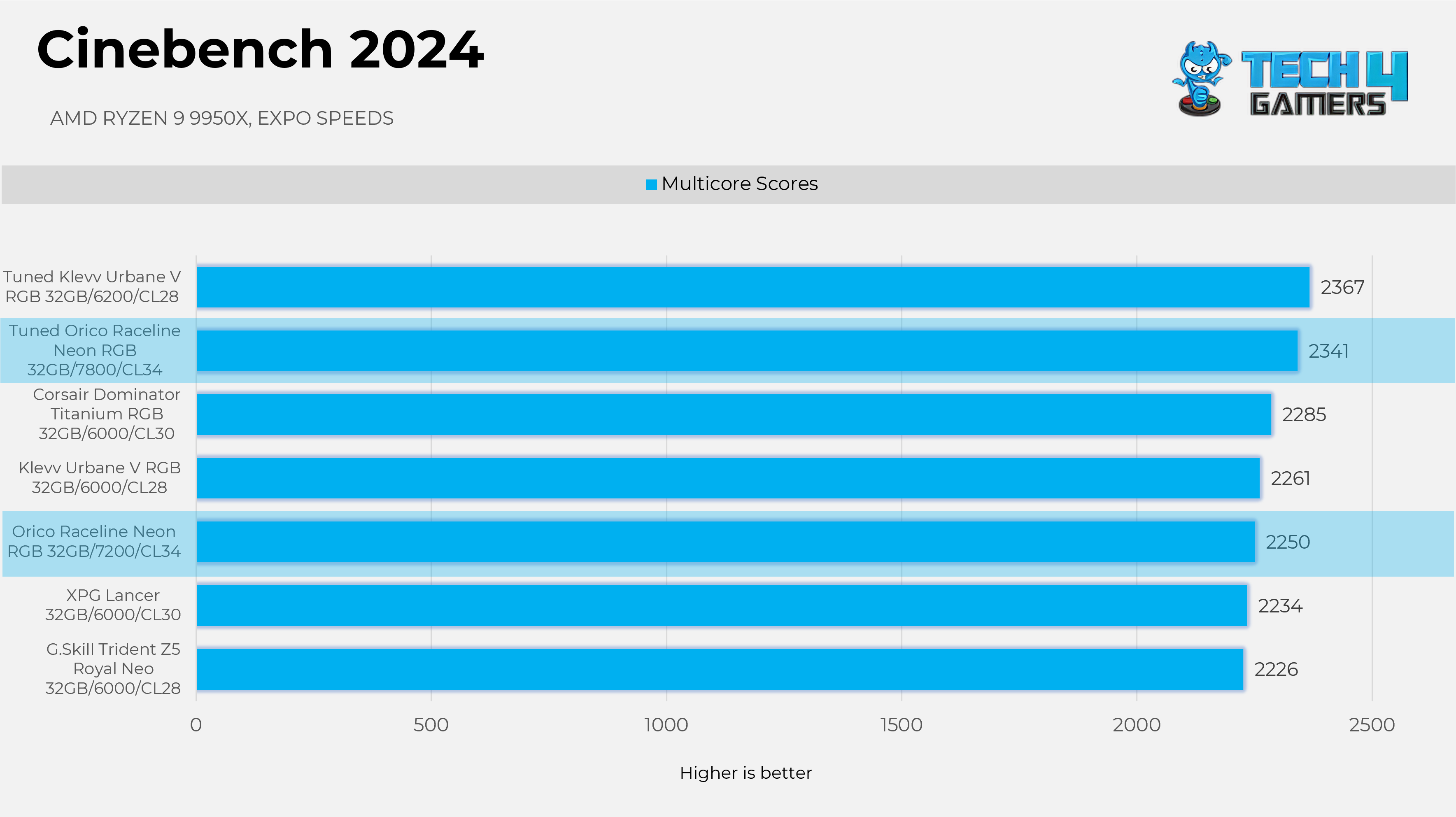
Y-Cruncher
Y-Cruncher can push the CPU and memory to their limits. This tool is very effective as it demonstrates how the system performs in extreme scientific/computational workloads. Y-Cruncher’s primary function is to calculate mathematical constants to a vast number of digits, which can simultaneously stress the CPU and memory. It’s an excellent tool for testing memory stability.
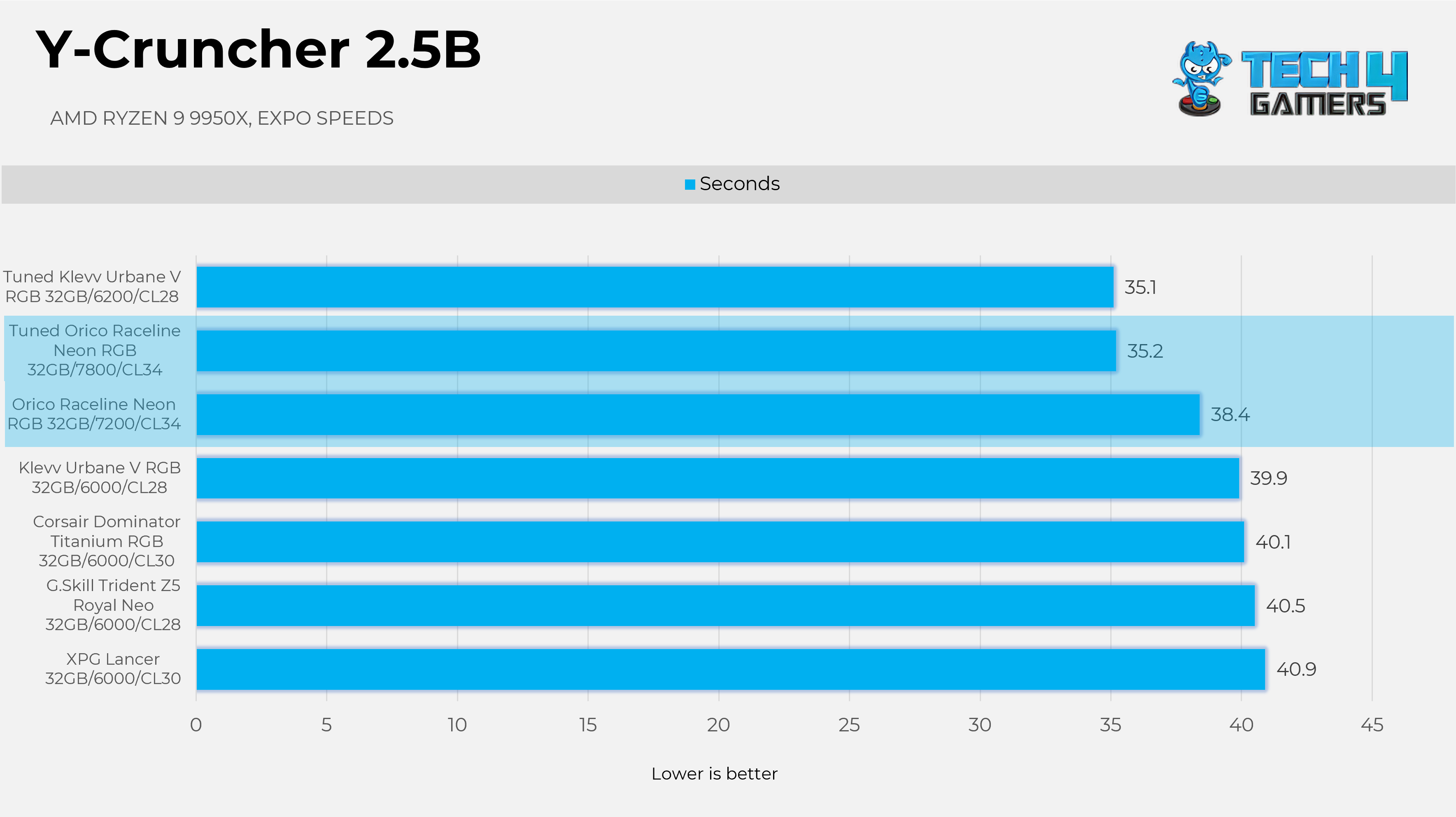
3D Mark CPU Profile
3DMark CPU Profile is an excellent tool for testing CPU Cores and Threads. However, faster RAMs can improve scores as the processor needs to access more data from memory in a multi-threaded workload, but the difference won’t be massive.
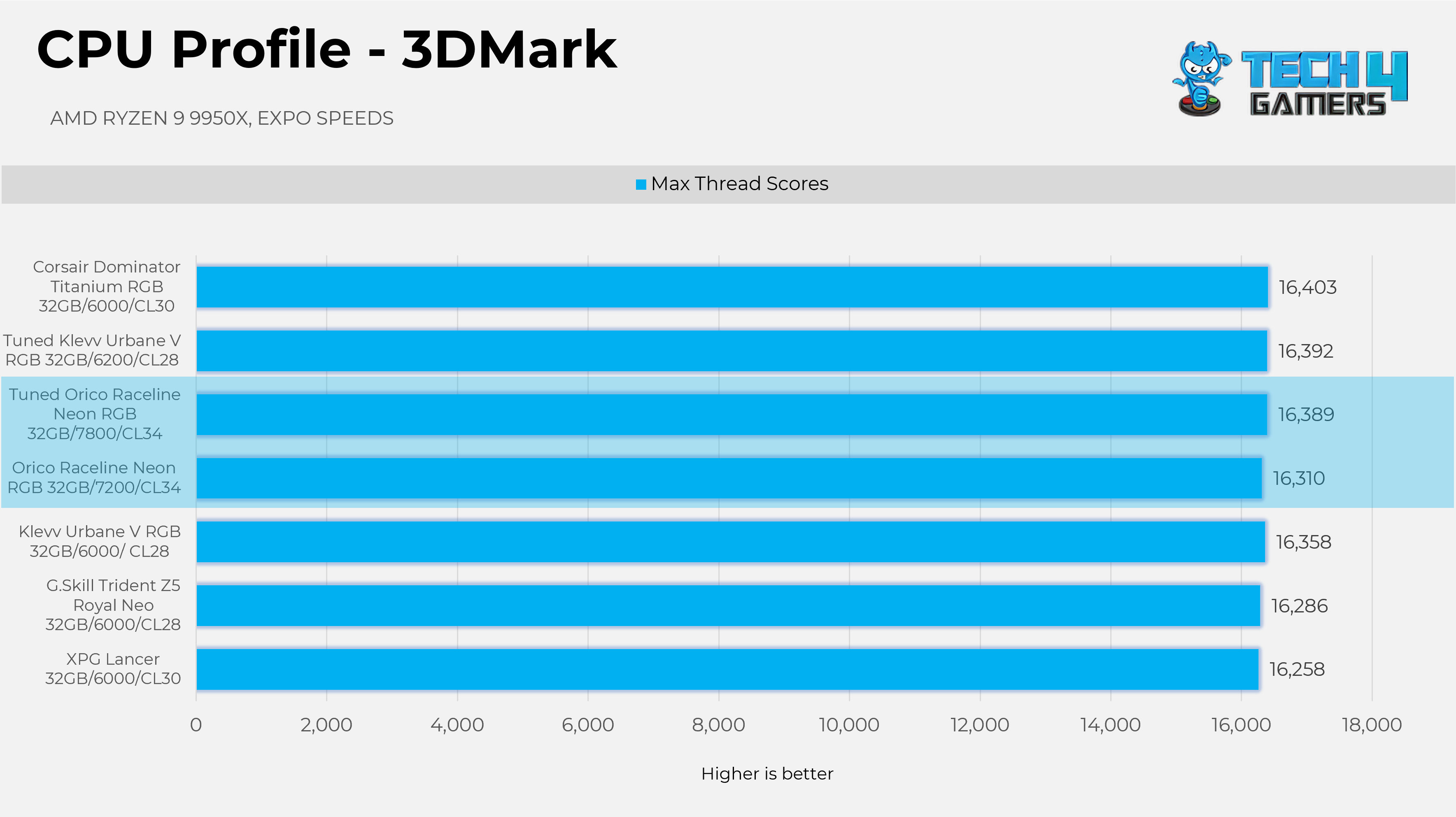
Test – Gaming
Cyberpunk 2077
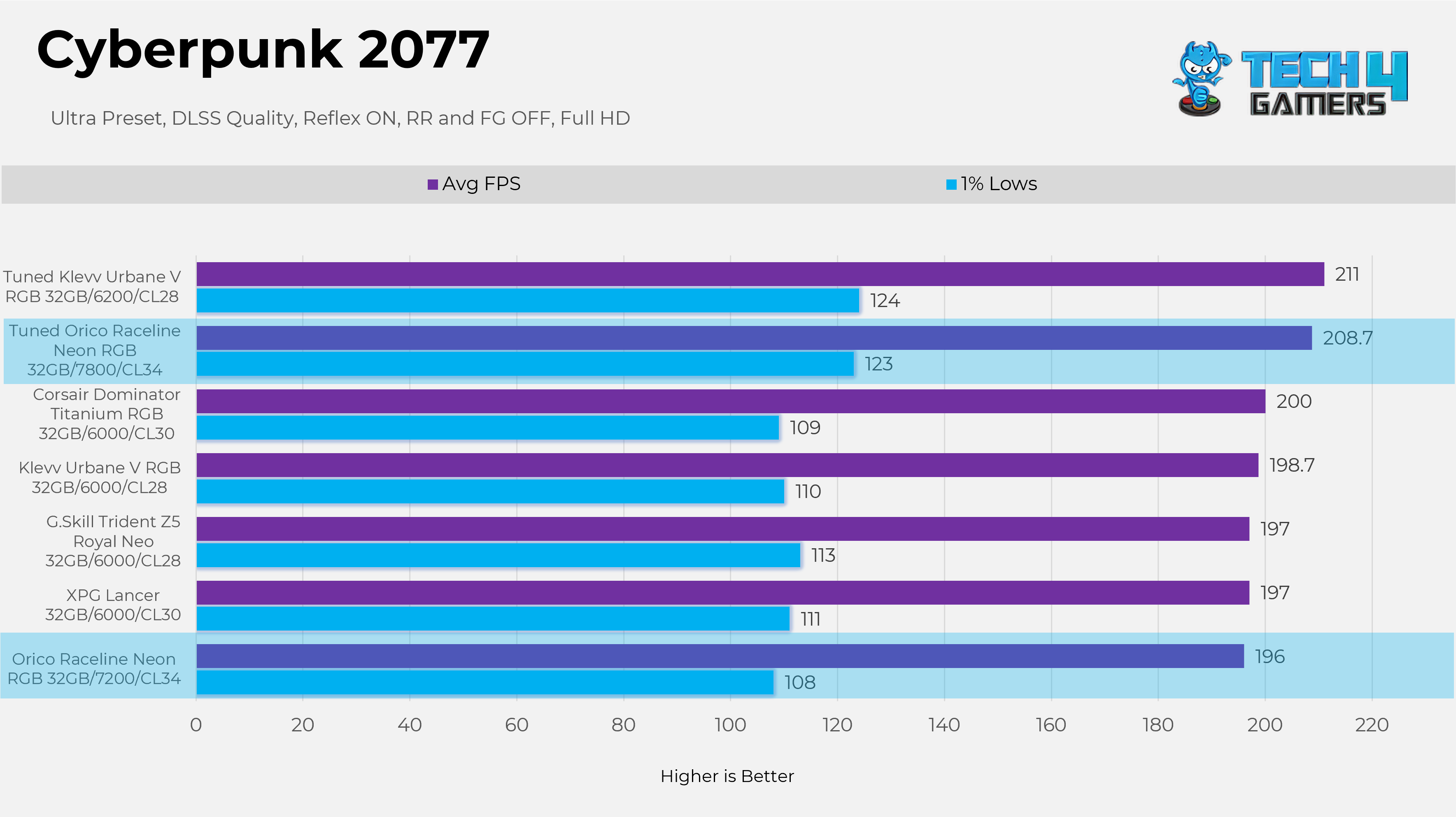
Counterstrike 2
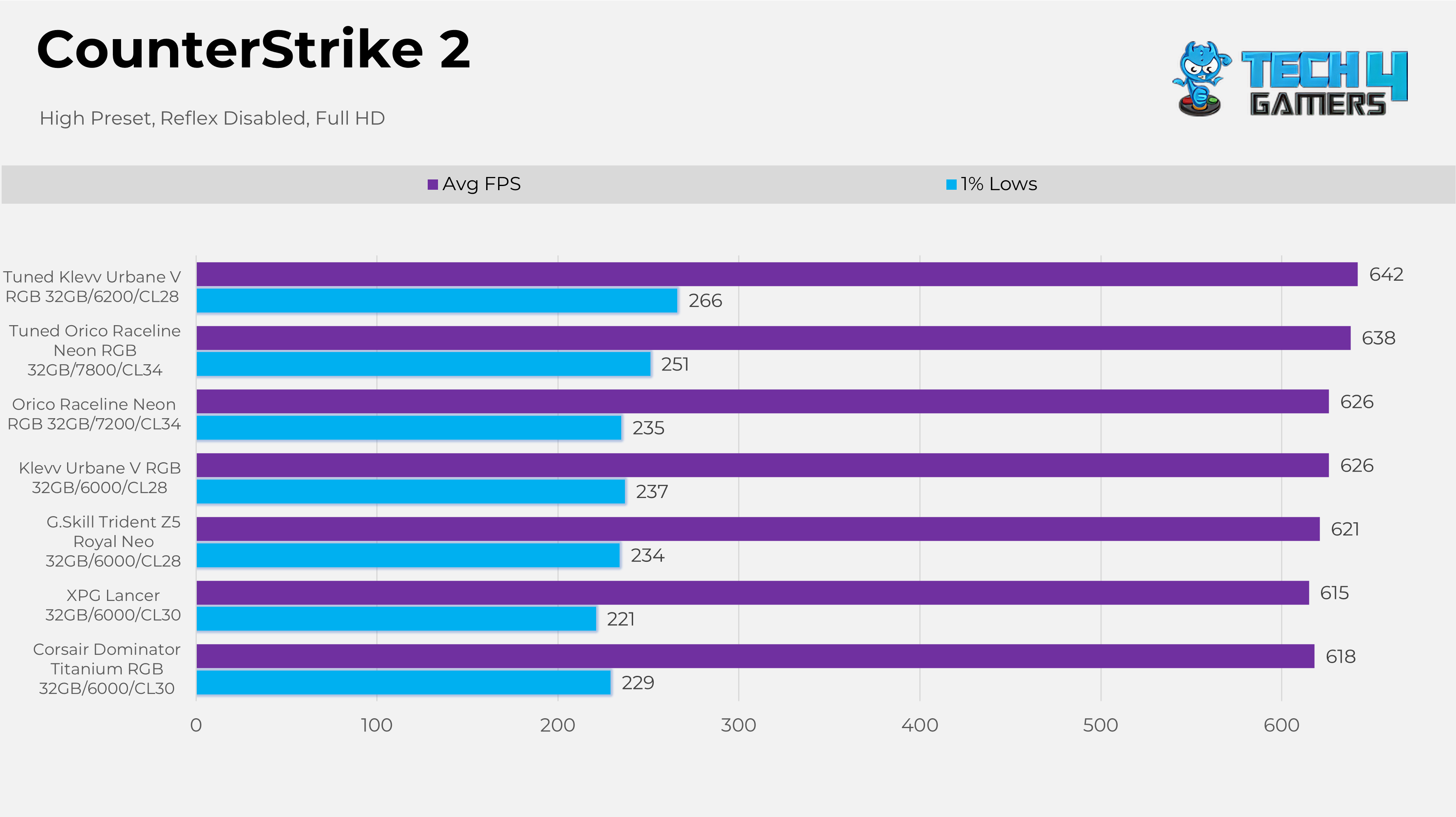
Should You Buy It?
Buy It If
✅ You Want Top Tier Performance: This RAM utilizes a top-tier bin with a tight latency of (CL34) at the transfer speed of 7200MT/s.
✅ If You Want To Overclock: This RAM incorporates Hynix IC, which has good overclocking potential. We have tuned the RAM, and we were impressed by its performance.
✅ You Care About Aesthetics: This RAM supports RGB, which provides the premium aesthetics.
Don’t Buy It If
❌ You Have A Mid/Entry Platform: This RAM not will run at its advertised speeds unless your CPU and motherboard are officially compatible with it. Ensure that you check your QVL RAM support list on your motherboard manufacturer’s page.
❌ Your Workload Doesn’t Benefit From The Extra Bandwidth: You should not buy this RAM if you primarily use your PC for office work, browsing, or just posting memes.
❌ If You’re Budget Constrained: High-frequency RAMs are usually more expensive; it’s better to invest in a better CPU or GPU.
Final Thoughts
The Orico Raceline Neon ticks all the boxes if you’re an enthusiast, as it features decent timings at 7200MT/s. This RAM would be fit for users who are in productivity or run tasks that require a lot of bandwidth. On EXPO Speeds, the RAM was on par with the other high-end kits and performed decently in gaming. However, higher frequency RAMs are not always beneficial, as they tend to be more expensive and do not provide significantly more performance gains compared to good 6000/6200 MT/s kits.
This memory has a good base latency of tCL 34, which falls in the premium RAM category. We have overclocked the memory further, increased transfer speeds, and adjusted some timings to extract more performance in games. Especially in CS2 and Cyberpunk 2077, the performance jump was observable. We have no objections to the timings, as they are already good. However, since this RAM utilizes Hynix IC, which is a top-tier IC, it may be advantageous for overclocking. We successfully overclocked the RAM to 7,800MT/s. We could have achieved 8000/8200 with some relaxed timings and additional VDD/VDDQ voltages, but due to time issues, we’ll leave it for another day.
This RAM might not fit in SFF Builds, though, as it’s 45mm tall, which could interfere with the large air coolers. Aesthetically, this ram has an aggressive tone. On the heatspreader, there are V-shaped ridges carved; this improves the thermal design of the RAM, also providing a sporty look at the same time. It is called ”Raceline” for a reason, though. This RAM is available in different speeds, including 6000/6400/7200 MT/s, and all kits utilize high-end ICs. Overall, we’re impressed by the build quality. As each side of the module features 1.5mm of strong aluminum, this also ensures better durability.
Currently, the ORICO Raceline Neon DDR5 RGB RAM 32GB (2x16GB) 7200MHz CL34 is listed for $129.99, which is a reasonable price for this product.
Thank you! Please share your positive feedback. 🔋
How could we improve this post? Please Help us. 😔
I’m Usman Sheikh, a Senior Hardware Reviewer at Tech4Gamers with over a decade of experience in the tech industry. My journey began in 2014 as a senior administrator for Pakistan’s largest gaming community forum. Passionate about PCs and hardware, I specialize in testing and reviewing components like graphics cards, CPU coolers, and motherboards, while also sharing insights on overclocking and system optimization.


 Threads
Threads
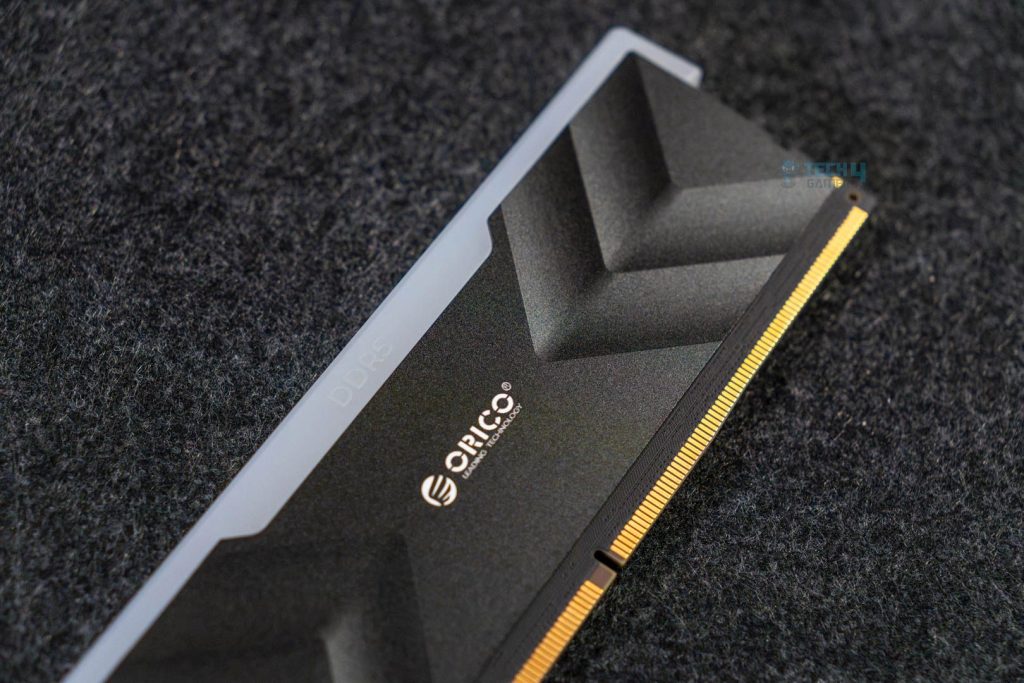
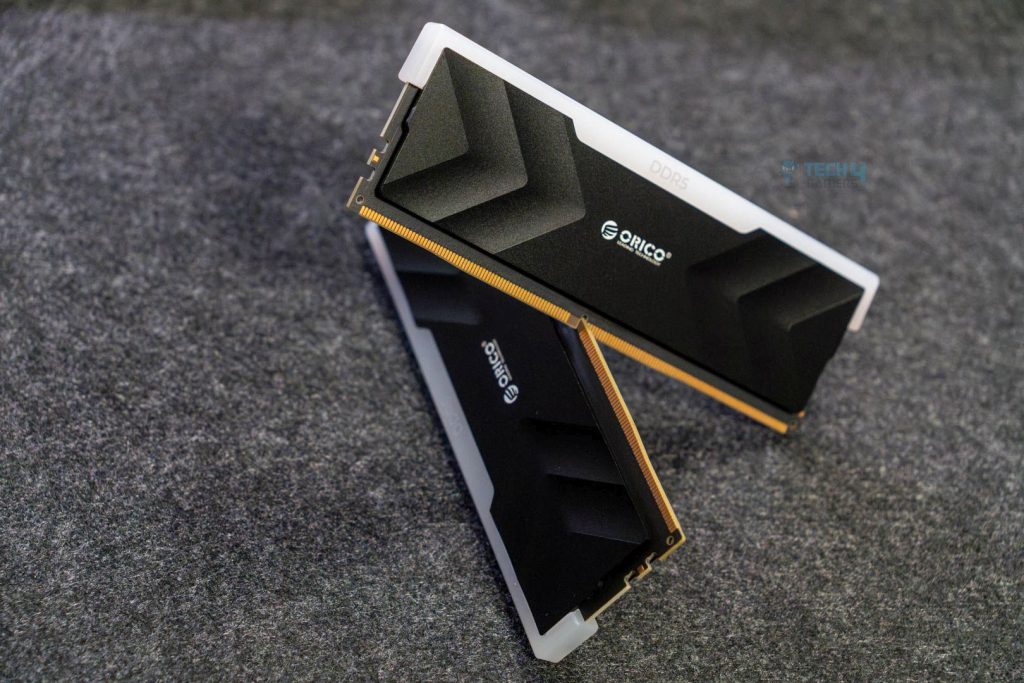
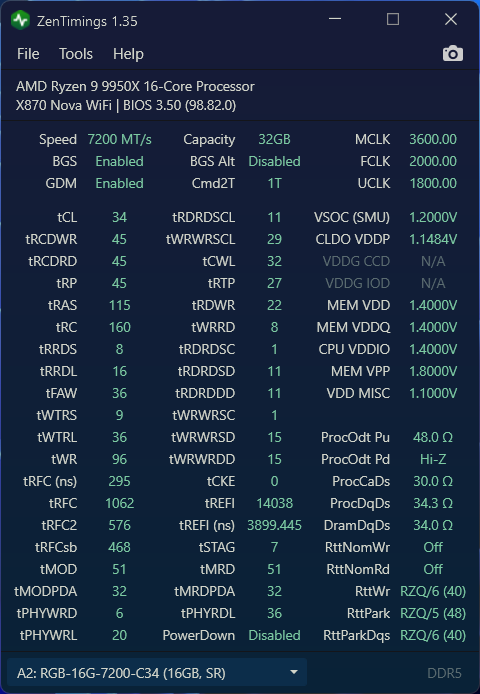
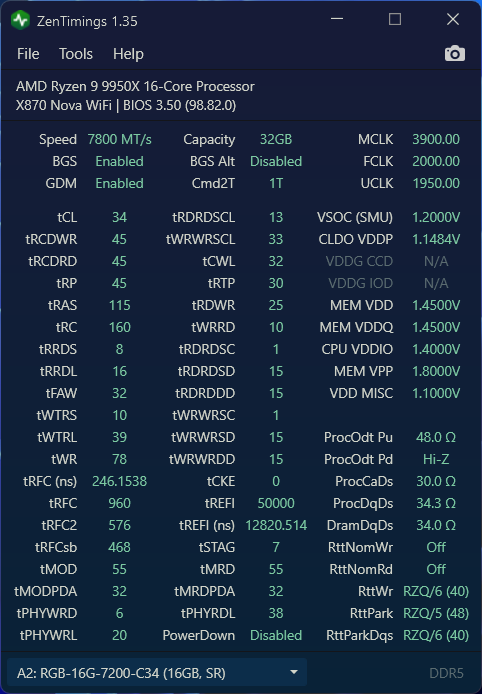
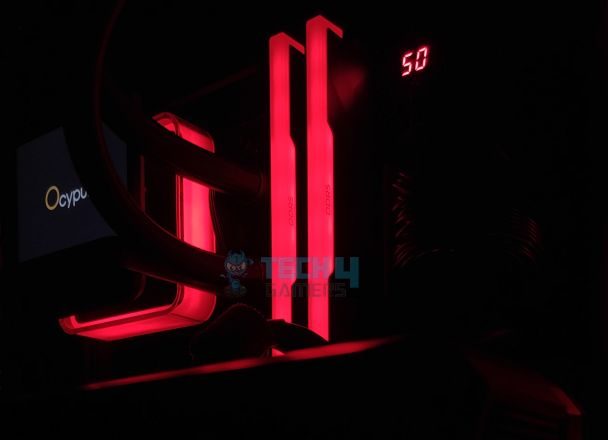
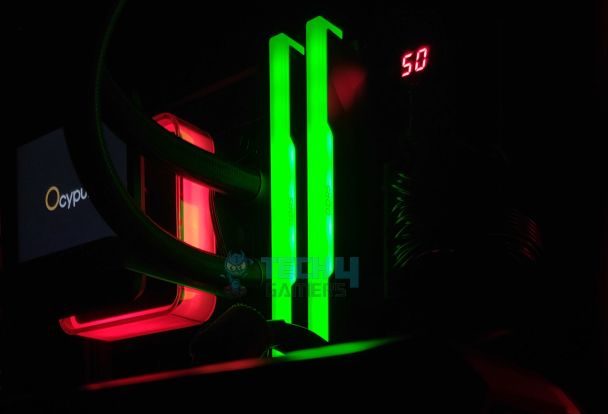
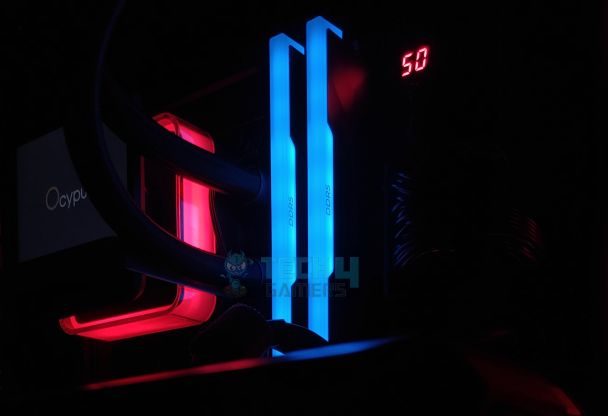
![Our Tried And Tested Best RAM For i5-14600K [With Benchmarks] Best RAM For i5-14600K](https://tech4gamers.com/wp-content/uploads/2023/10/Best-RAM-For-i5-14600K-218x150.jpg)
